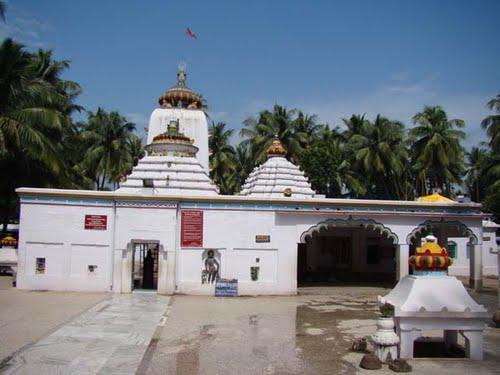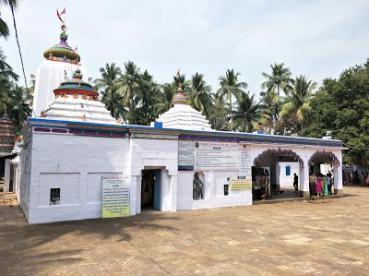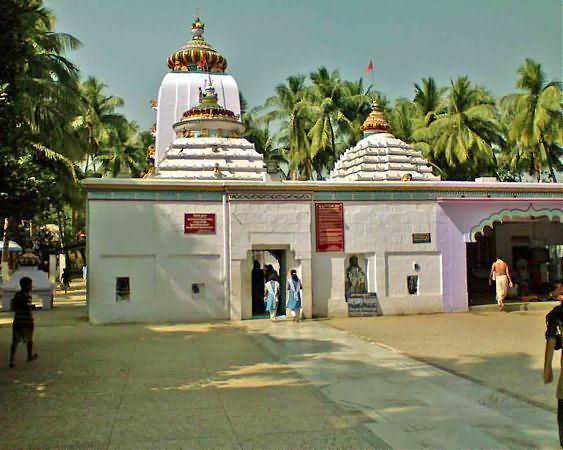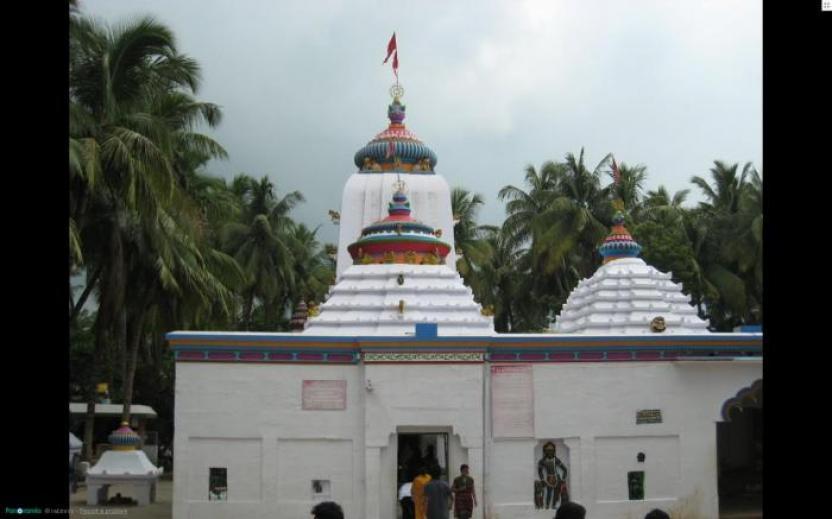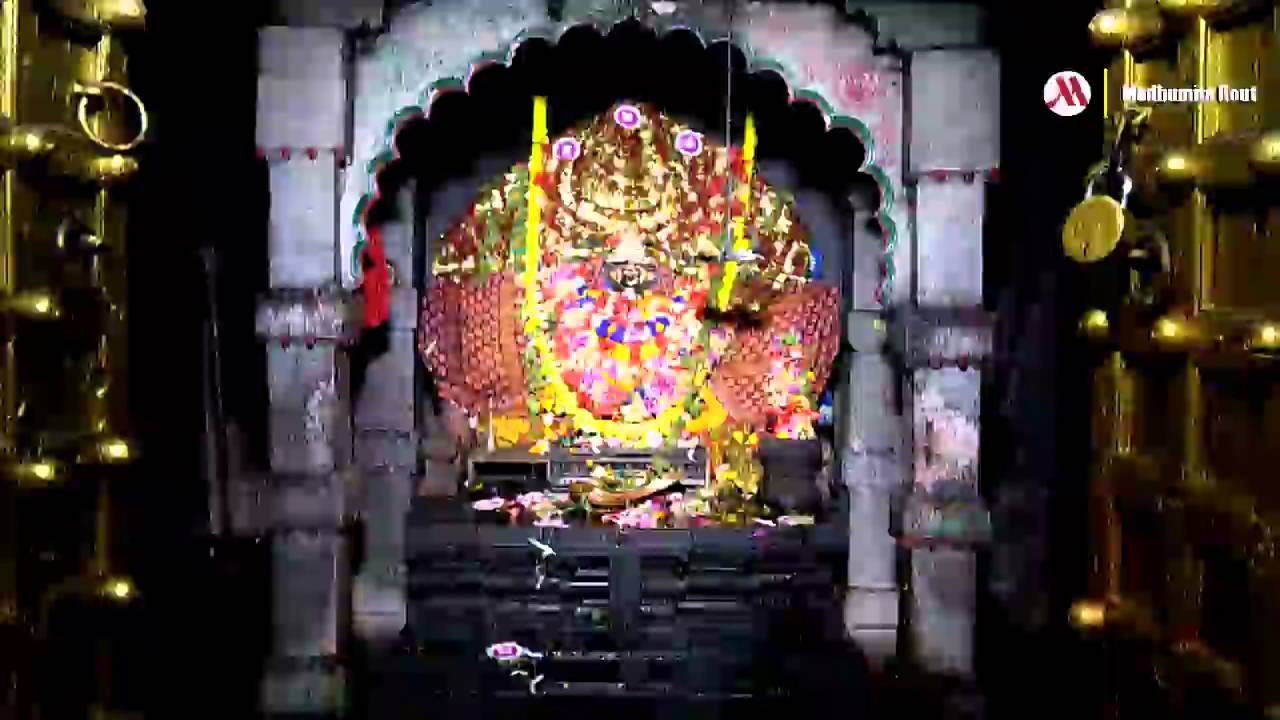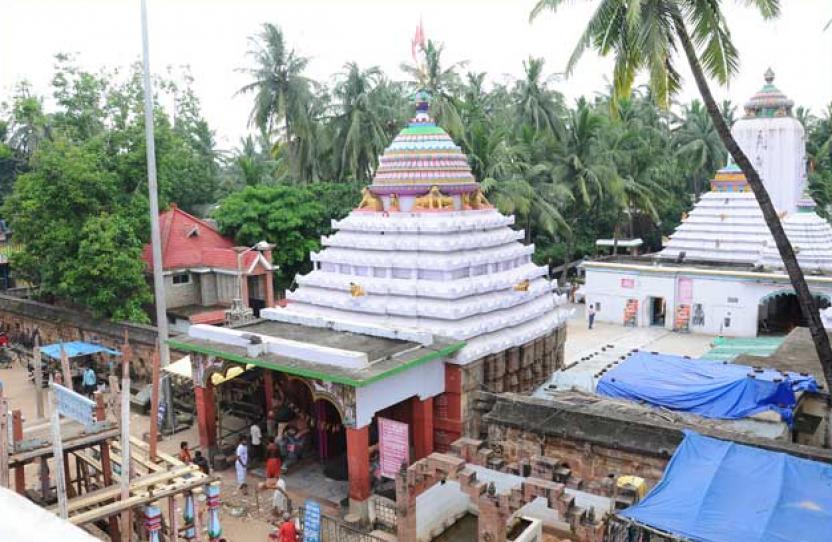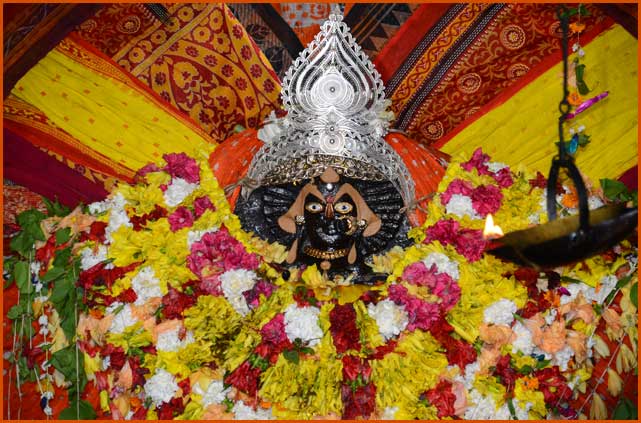Contents
Biraja Temple, Jajpur, Odisha
| Date built: | – |
|---|---|
| Deity: | – |
| Architectural style: | – |
| Major festivals | – |
| Locale: | – |
| District:: | Jajpur |
| Address: | Jajpur, Odisha 755007 |
| Phone | 07873904563 |
Maa Biraja Temple is an historic Hindu temples located in Jajpur (about 125 kilometres (78 mi) north of Bhubaneswar), Odisha, India. Biraja or Viraja Temple is one of the important Maha Shakthi Peetas. Here the main idol Durga Devi is worshipped as Girija (Viraja) and Lord Shiva as Jagannath. Sati’s navel fell here. Adi Sankara describes the goddess as Girija in his Ashtadasha shakti peetha stuti. Here Maa Biraja Devi is worshiped as Trishakti Mahakali, Mahalakshmi and Mahasaraswati.
The Maa Biraja Temple covers a large area, and has several shrines to Shiva and other deities. According to the Skanda Purana it cleanses pilgrims, and it is called the Viraja or the Biraja kshetra. Jajpur is believed to have about one crore of Shiva lingams.
Festivals
The primary ritual in the temple is Sharadiya Durga Puja, which begins on the night of Krishna Paksha Ashtami. This falls before Mahalaya, and ends on Ashwin Shukla Paksha Navami. The puja, known as Shodasha Dinatatmika Puja, lasts for 16 days. The ratha (chariot festival) is known as Simhadhwaja, and its flag bears a lion.
During the lunar transition from Shukla Ashtami to Shukla Navami an animal sacrifice, Bali Daanam, is performed. Navratri is celebrated as Aparajita Puja. Other festivals include Nakshatra, Shravana, Prathamastami, Pana Sankranti, Raja Parva and Navanna. Devi is worshiped daily in accordance with Tantra and Agama traditions as Mahishasuramardini by the Brahmins of Jajpur.
Architecture
No historical record is available about the pristine glory of the great mother goddess Biraja before the great epic the Mahabharata was written. There is a reference to Virajah-Tirtha in the Vanaparva of the Mahabharata in chapter 85. Moreover the said epic reiterates that the Virajah-Tirtha was a sacred place for Vedic sacrifices where Dharma, the God of Righteousness had performed a great sacrifice. During the performance of sacrifice Rudra -Siva is said to have been accepted as an Aryan God by other Gods and the mother Earth had appeared in the form of altar. Therefore, it is but natural that the goddess Earth was worshipped as goddess Biraja of the Virajah-Tirtha, Later on. The Ṛigvedic earth goddess was a vaishnavite deity and so became goddess Biraja of the Virajah-Tirtha. The Mahabharata is as old as 7th-6th century B.C. as determined by the scholars. The historicity of goddess Biraja goes back to the days Mother Goddess worship of the Atharva Vedic period i.e. 13th century B.C.
She was originally worshipped in the form of an altar and later on in the form of Stambhesvari (pillar Goddess) as was the primitive practice when carving of stone; metal or wooden images were yet to come about. Most probably she was vindhyavasini and Biraja as they named her. During the Gupta rule in India in the 4th century AD, Goddess Biraja was metamorphosed in the theriomorphic form and a stone image of two-armed Mahisamardini was installed in a temple after a great Vedic sacrifice beside the river Vaitaraṇi. Since then she is being worshipped on the pedestal as the symbol of paramavaiṣnavi Sakti icon. Simultaneously Nabhigaya, a great Pitṛ Tirtha, Isanesvara, lord Varaha and many ancillary deities were added to the Biraja tradition. We are apprised of her greatness from several copper plate grants of Durjaya, Vigraha, Dutta and Maṇa royal dynasties who patronised and revered the deity.
During Bhaumakara rule in 10th -11th century AD, a beautiful temple for Goddess Biraja had been built by Candihar Yayati II. Biraja Kṣetra was made a full-fledged Sakti piṭha with the association of Aṣṭa Candi, Aṣṭa-Bhairava, Navadurga, Sapta Matṛka, Trayodasa Rudra, Dvadasa Gaṇesa, Sixty eight Tirthas and Causaṭhi Yogini during Bhaumakara and Somavamsi period. The Somavamsis added a car festival or Rathayatra with the Biraja tradition like that of the Goddess Vindhyavasini and Sthambhesvari of mid-India. Though during the Mughal Afghan rule the Sakti worship relating to Goddess Biraja faced the ups and downs, the tradition continues undeterred till today.
Legend / Local stories
According to Brahmanda Purana, once Brahma (the creator of the Universe) performed a Yajna (great sacrifice) on the river Baitrani. Parvati emerged from the Garhapatya fire as a result of Brahma’s invocation and advised Brahma to name her as Biraja. Brahma prayed to Parvati and asked her to stay at the Kshetra as the divine consort of Siva. Parvati agreed and created Nine Durgas, Sixty Four Yoginis, Eight Chandikas and asked them to remain in the Kshetra permanently. Due to the presence of these deities, this land was well known as Shakti Peetha. At Biraja Temple, Lord Vishnu is in Varaha incarnation.
Jajati Keshari, a ruler of Kesari dynasty built the Biraja temple in Jajati Nagar (now Jajpur) in 13th century during the Kalinga time. The deity, Maa Biraja which stands 70 ft from the floor is said to be worshipped from 5th Century. The temple is named after the King Jajati Keshari. According to the legend, the place is also known as ‘Gadakhestra’, as Bhima’s Gada (mace) was lying in this holy place. In front of the temple stand two lions above elephant. This is indicative of the greatness of Keshari dynasty (Symbol of Lion) than Gajapati dynasty (Symbol of elephant) in Orissa.
A great Yagna (sacrificial oblation) was performed over the body of Gayasur, (the great demon devotee of Lord Vishnu) by the Lords Shiva, Brahma and Vishnu to kill the demon. Gayasur’s feet were in Pada Gaya (a place in Pithapuram, Andhra Pradesh), nabhi (Navel) in Biraja Kshetra or today’s Jajpur, known as Nabhi Gaya and head at Shiro Gaya. The exact spot is in a well that lies inside the Biraja temple just close to Maa Biraja.
Photo Gallery
How to Reach:
The nearest railway station is Cuttack and Jajpur Keonjhar Road. From there regular buses can be availed to Jajpur town. Mostly private buses run regularly in Orissa. Autos connect Cuttack railway station to Barabati bus stand, which is hardly 3 km away. The bus from Cuttack to Jajapur town takes 2 to 2+1⁄2 hours. From Jajpur road to Jajpur town travelling time by road will be more than one hour. Also buses are available from Bhubaneswar. Buses which have express written on the buses are quicker than local buses.
Accommodation
A couple of lodges are next to the temple and another is being constructed.
Contact Details
Official Address

